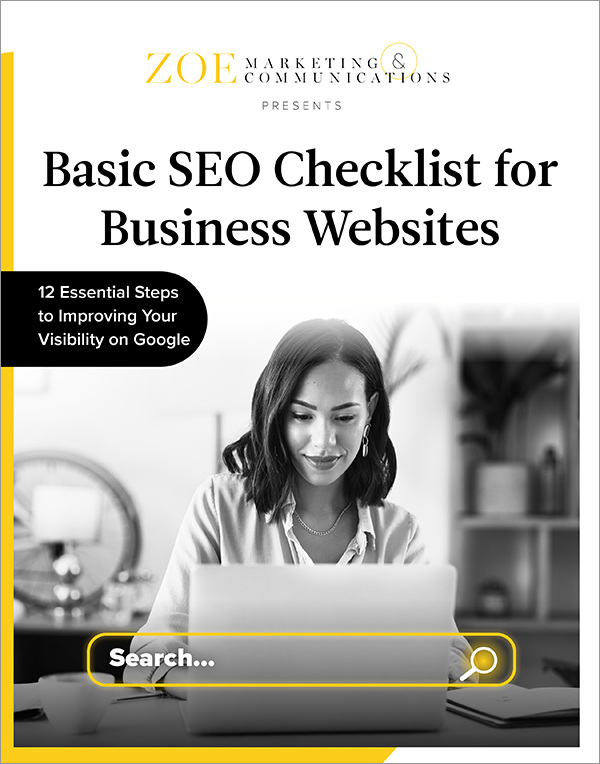
Download Your Basic SEO Checklist
Unlock the fundamentals of search engine optimization. This checklist provides step-by-step guidance to improve your site’s search ranking.
Topics:

Search engine optimization, or SEO, is the art and science of getting people to find your website, visit it and stay on it. It’s the process of ensuring your website ranks well in search results, attracts visitors and keeps them engaged.
But with 93% of online experiences starting on a search engine — and only 9% of content getting traffic — standing out isn’t easy.
At Zoe Marketing & Communications, we help businesses navigate SEO with strategic, ethical strategies. Here, we’ll break down SEO into three key areas, including on-site, technical and off-site SEO. Plus, you’ll learn how it’s evolving and best practices to follow.
Unlock the fundamentals of search engine optimization. This checklist provides step-by-step guidance to improve your site’s search ranking.
SEO helps your website rank higher on Google and other search engines. The goal is to:
Most users never go past the first page of search results. That’s why appearing near the top is critical. SEO helps your content meet Google’s standards while making your site a trusted resource for users.
SEO is built on three main areas: on-site SEO, technical SEO and off-site SEO.

On-site SEO focuses on optimizing your website’s content and structure to improve rankings.
Technical SEO ensures your website is fast, user-friendly and easy for search engines to crawl.
Off-site SEO builds authority and credibility through links and mentions from other sites.
SEO is always changing. Here are a few key trends shaping the future:

“Black hat” tactics, like keyword stuffing or misleading content, can hurt your rankings. Stick to “white hat” SEO by:
SEO is an ongoing effort that requires attention to content, technical performance and external credibility.
If you need help improving your rankings, talk to us. Zoe Marketing & Communications can create an SEO strategy tailored to your business.
Want to keep learning? Discover:

Unlock the fundamentals of search engine optimization. This checklist provides step-by-step guidance to improve your site’s search ranking.
As Zoe Marketing & Communications’ content manager, Kim Kovelle brings over 20 years of writing and editing experience in metro Detroit. She has strong roots in community journalism and a knack for making complicated topics make more sense.
Topics:
